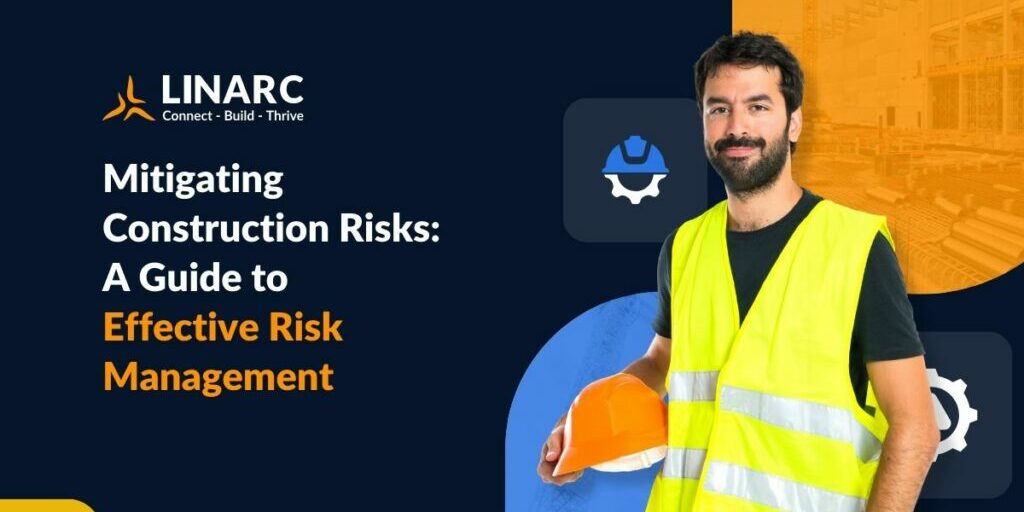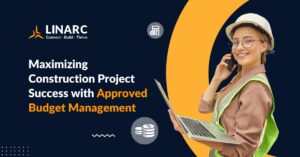Mitigating Construction Risks: A Guide to Effective Risk Management

This article covers:
Strategies for Owners and Developers: Minimizing Risks in Construction Projects
Construction projects are riddled with potential risks and inherently fraught with volatility, uncertainty, and a variety of risks. These risks range from environmental challenges and project delays to significant safety concerns.
Identifying these risks early is crucial for effective management and a safe workplace. In this blog post, we will explore the critical role of risk management in construction and discuss practical mitigation measures that owners and developers can implement to safeguard their projects.
To combat these risks, it’s essential to employ statistical risk management techniques, which involve identifying and assessing risk factors, estimating the potential time and cost impacts, and implementing effective mitigation strategies to keep projects on track and within budget.
Integrating advanced communication tools has proven pivotal in developing successful risk mitigation strategies.

Throughout this discussion, we will highlight how owners and developers can benefit from innovative risk management tools within construction project management software, enhancing their ability to navigate construction risks and ensure project success.
What is Risk Management in Construction?
Risk management in construction, particularly for owners and developers, is a crucial practice that can dictate the success or failure of a project. Given the complexity of construction projects – which often involve a myriad of stakeholders, stringent deadlines, and diverse environmental conditions – managing risks becomes an indispensable part of the process. For owners and developers, this means identifying potential risks and understanding their implications on the overall project.
Fortunately, construction project management software exists to help with this. The tools within these systems enable owners/developers to identify risks before they become problems, determine appropriate responses, communicate effectively throughout the organization, and more.
Identifying Construction Project Risks
Before delving into risk management strategies, it’s essential to understand the common risks associated with construction projects. Effective risk management involves identifying your construction risks before they happen.
There are several key components to identifying project risks.
- Early identification of potential risks – anything from budget overruns to delays caused by unforeseen environmental factors. This early identification is crucial as it allows for developing strategies to mitigate or completely avoid these risks.
- Risk management necessitates the assessment and prioritization of these risks. This involves evaluating the likelihood of each risk occurring alongside its potential impact on the project. Owners and developers must focus on high-priority risks that could significantly affect the project’s timeline, budget, or quality.
Construction project management software plays a vital role in this process. These tools provide a systematic approach to risk management, allowing for more accurate identification and assessment of risks. They offer risk tracking, real-time data analysis, and predictive insights, enabling owners and developers to make informed decisions. Additionally, these systems facilitate effective communication across the organization, ensuring all stakeholders know potential risks and the strategies to address them.

Owners and developers can foresee potential issues and develop and implement effective response strategies by employing these advanced tools. This proactive approach is key to navigating the complex landscape of construction projects, ultimately leading to their successful completion with minimal disruptions.
Risk Management Prioritization and Impact Assessment
For construction owners and developers, prioritization and impact assessment are critical steps in risk management. This process involves meticulously evaluating potential risks to determine their likelihood and potential impact on the project. Owners and developers should focus on identifying the most significant risks first, those that could severely affect project timelines, costs, or quality. By systematically analyzing these risks, they can understand which issues warrant immediate attention and allocate resources effectively. This strategic approach ensures that high-impact risks are managed proactively, minimizing their potential to derail the project’s success.
Risk Mitigation Strategies
Developing a comprehensive risk management plan tailored to the specific project is paramount. There are a variety of strategies to mitigate the inherent risks throughout the project lifecycle.
Key strategies in the construction industry include:
- Goal Setting and Risk Assessment: Establishing clear objectives and evaluating market risks are fundamental to managing construction risks effectively.
- Managing Material Shortages: Tackling shortages and delays in construction materials is vital to counter the effects of supply chain disruptions.
- Developing Risk Management Plans: This involves pinpointing potential hazards, analyzing risks, and crafting plans to either mitigate or eliminate these risks.
- Strengthening Communication and Documentation: Keeping everyone updated on project progress, potential risks, and mitigation strategies is key for informed decisions and project success.
- Implementing Safety Measures: Adopting safety protocols to reduce accident and injury risks on site is essential for the smooth running of projects.
- Financial Risk Management: Addressing financial risks like delayed payments, rising costs, and fraud is critical for maintaining healthy cash flow and promoting growth.
Sophisticated construction project management solutions like Linarc help with all of the above risk mitigation strategies. The platforms features go beyond simple risk identification and scoring including proactive safety measures module that assists owners/developers in implementing best practices and preventive measures. Linarc facilitates clear communication among stakeholders, ensuring risk management strategies are effectively implemented throughout the project lifecycle becoming a collaborative hub for risk mitigation, fostering a culture of safety and proactive problem-solving.
Contingency Planning and Response
Contingency planning is a key element of risk management, providing a safety net for unexpected challenges. Linarc equips owners/developers with tools for creating comprehensive backup plans and resource allocation strategies. From establishing financial reserves, identifying alternative suppliers, and developing backup schedules, Linarc enables owners/developers to respond swiftly and effectively to unforeseen risks. This proactive approach minimizes the impact of disruptions and contributes to the project’s overall resilience.
Monitoring and Reviewing Risk Management Strategies
Effective risk management is an ongoing process that requires regular monitoring and adjustments. Linarc’s real-time monitoring and tracking capabilities empower owners and developers to stay abreast of risks and project progress. The platform’s reporting and analytics tools provide valuable insights, enabling owners/developers to review the effectiveness of risk management strategies. By making data-driven decisions, owners/developers can adapt their approaches as needed, ensuring that the project remains on course and risks are consistently mitigated.
Conclusion
In conclusion, mastering risk management is integral to the success of construction projects, and Linarc emerges as a powerful ally for owners and developers in this endeavor. By leveraging its innovative features for risk identification, prioritization, mitigation, contingency planning, and collaborative risk management, owner/developers can navigate the complexities of construction projects with greater confidence.
Linarc not only facilitates the efficient execution of risk management strategies but also contributes to enhanced project success through informed decision-making and proactive problem-solving, fueling continuous improvement for future projects. As the construction industry continues to evolve, Linarc stands at the forefront, empowering owner/developers to build a future of resilient and successful projects.
Want to learn more about Linarc’s construction project management software, schedule a demo today.




